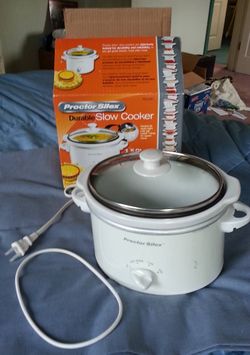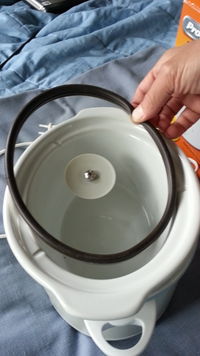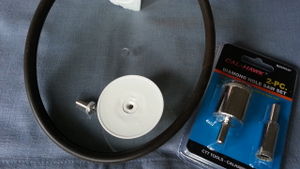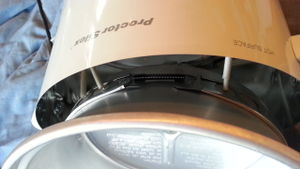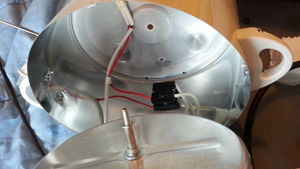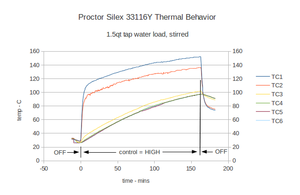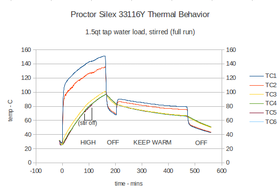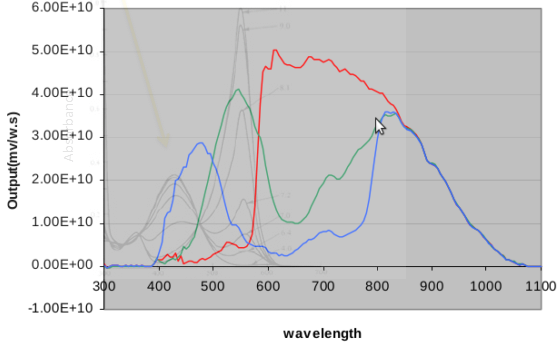Lab Scale Fermentor
Lab Scale Fermentor
This is a version of the OSE Fermentor primarily for process-development experiments.
It may be used on the Polylactic acid project.
Prototype Development
I have acquired some components and will report here on construction progress of a low-cost "lab scale" (~1 liter) microbe fermentor. ChuckH (talk) 04:48, 29 August 2013 (CEST)
Chamber
Our basic chamber is a small consumer slow cooker ("crock pot"). This unit (Proctor Silex 33116Y) has a glass lid with a soft rubber lip seal and costs about $15.
The lid is made of glass. It appears not to be tempered, as the handle is attached by a screw through a drilled hole. This is good, because it means we can drill our own holes for stirring, sensors, and fluid lines. I will try using some cheap diamond core drills (the set shown cost $5 on Amazon).
The heating jacket is a light-gauge aluminum bowl with a band heater around it. The heater has two elements, measuring 477 ohms and 200 ohms. The front-panel switch selects element 1, element 2, or both in parallel, providing 28W, 66W, and 94W respectively at 115V input. There is no thermostat.
It should be possible to control temperature with an arduino, thermistor, and solid-state relay, without any modification to the internals.
Thermal Characterization
In order to establish expectations and initial control parameters for the temperature control algorithm, we measured the heating performance of the chamber filled with water. The behavior is somewhat nonlinear, and has two significant thermal masses with different thermal time constants. Nonetheless, a reasonable single-time-constant linear model approximation can be obtained. Ambient temperature was ~30C. Initial fluid temperature was ~25C.
The thermal time constant is estimated at 120 minutes, and the temperature rise rate at the "HIGH" setting corresponds to an ultimate temperature of ~80C above ambient.
Spreadsheet: File:ThermalCharacterization.ods
| TC1 | Heating jacket, near heating element |
| TC2 | Heating jacket, center bottom |
| TC3 | Bowl, outside, near middle height |
| TC4 | Bowl, inside, aligned with TC3 |
| TC5 | Water, ~4mm off bottom, centered |
| TC6 | Water, ~6mm immersed, off-center |
The lid steams up at higher temperatures, might interfere with observations.
pH sensing
colorimetric sensing of gel-stabilized phenol red indicator seems hopeful. The dye is readily available at low cost as a pool test chemical. Differential optical absorption measurement between the violet-absorption and green-absorption peaks can be converted into a pH reading. Unfortunately the dye absorption peaks don't line up ideally with typical digital camera color filters:
Alternating illumination with appropriate LEDs, using a USB webcam and a split field of view between inactive reference reflector and dye-loaded gel could work. Try agarose for gel.
